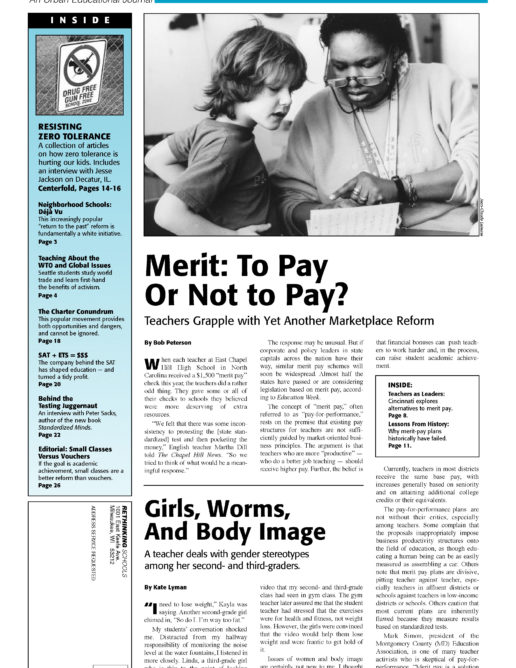Preview of Article:
Teaching About the WTO
I teach at an alternative public high school for students who have been unsuccessful in traditional high school environments. During the fall, my teaching partner, Alonzo Ybarra, and I had prepared our students for the WTO meetings in Seattle by teaching about global issues. Using an eclectic smattering of online resources, pamphlets, videos, and books, we ran our students through a crash course in imperialism, globalization, labor rights, environmental protection, and the role of the WTO. We had asked key questions such as: How does our global economy work? Who benefits from existing trade relationships? What impact do current trade practices have on the environment? On workers?
We watched movies about Disney’s sweatshops in Haiti and The Gap factories in Central America. We studied imperialism and how, in recent world history, nations such as the United States, Japan, and those of the European Union had used the World Bank, the International Monetary Fund, and the General Agreement on Tariffs and Trade to extract wealth from impoverished nations.
Pulling together the unit was difficult because we had to reach out to a wide variety of resources. Fortunately, we had the luxury of being at ground-zero for the WTO conference and protests. Teach-ins for students and teachers were taking place at least once a week. Articles about the WTO appeared in both the mainstream and alternative media nearly every day. And probably most important, there was an increased activist presence in Seattle.
My students, who come mainly from Black, white, and Asian working-class families, related to the labor and human rights issues in particular. They, along with their families and their communities, understood the working-class pangs of too much hard work for too little pay. They were able to connect with the problems of child labor, of 13-year-old girls working 16-hour days for a few dollars in wages. This connection became an important part of my students’ growing political awareness; it allowed them to recognize their relative privilege in comparison to Third World workers while simultaneously finding solidarity in knowing that the same system treats people unfairly both in their own neighborhoods and internationally.
CURRICULUM ON THE WTO
As I researched WTO materials to use in class, I found that several WTO curricula had been published in the months preceding the meetings in Seattle. I found one curriculum that, for the most part, was useful: “Approaching WTO Education: How to Bring WTO into Your Classroom by Engaging Students in International Trade Disputes”(www.washington.edu/wto/classroom). The curriculum was sponsored by the Seattle Host Organization and King County and was developed by individuals from the World Affairs Council of Seattle, the University of Washington Business School, and the University of Washington for Inter-national Business Education.</p

